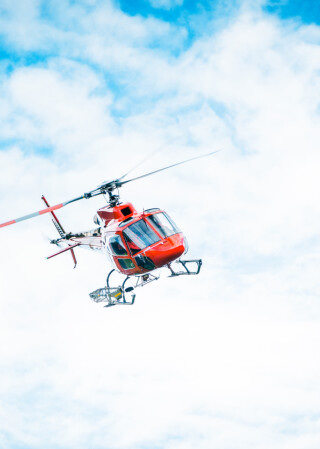A man, who suffered serious injuries in a helicopter crash in the Northern Territory, has now had his claim for damages extinguished, with the Supreme Court of the Northern Territory finding that proceedings were commenced five weeks after the expiry of the limitation period.
Background
On 12 November 2013, Ryan Street was a passenger in a helicopter operated by Arafura Helicopters Pty Ltd t/as Alice Springs Helicopters and flown by a pilot employed by Arafura. The helicopter took off from a position south-east of Alice Springs. Approximately one hour into the flight, Mr Street was told by the pilot that the helicopter was going down and that he should brace for impact. The helicopter crashed and Mr Street suffered serious injuries as a result.
Court proceedings
Mr Street commenced proceedings in the Supreme Court of the Northern Territory against Arafura, in negligence and claimed damages. Arafura denied liability. It also argued that liability has been extinguished under s 34 of the Civil Aviation (Carriers’ Liability) Act 1959 (Cth) because the claim was not brought within two years after the date of the accident.
Mr Street engaged Slater & Gordon to represent him in the proceedings. Following a series of events involving a town agent, forms were filed incorrectly with the Supreme Court Registry and which did not comply with the Supreme Court Rules. On 12 November 2015, exactly two years from the date of the accident, the solicitors again attempted to file an originating process in the court Registry, with the solicitor paying the filing fee using his personal credit card. However, four days later, on 16 November 2015, the Court Registry Manager returned to work from annual leave and she noted that the documents filed on behalf of Mr Street had been rejected by the Registrar as they did not comply with the Supreme Court Rules.
Following a change in legal representation, on 18 December 2015, HWL Ebsworth, Mr Street’s new solicitors, filed an originating process that was in accordance with the Supreme Court Rules and was accepted by the Supreme Court Registry. The issue became whether the originating process could be backdated to the earlier date, and therefore within the limitation period.
His Honour Southwood J noted that the jurisdiction of the Supreme Court is invoked when a Writ is delivered to the Alice Springs Supreme Court Registry and is accepted by a Proper Officer of the Court. On the evidence, this only occurred on 18 December 2015 (five weeks after the limitation period) after HWL Ebsworth filed a Writ which was in accordance with the rules. None of the documents filed before that date were accepted by the Registrar. Further, while the Registry appear to have had a practice of backdating originating process that had not been formatted correctly, and did so in this case, there is no power for them to do so.
Accordingly, Southwood J found that Mr Street’s claim was extinguished by the operation of s 34 of the Civil Aviation (Carriers’ Liability) Act.
Street v Arafura Helicopters Pty Ltd [2018] NTSC 15.
For more information on the above contact Joe Bonura on (02) 4626 5077 or jbonura@marsdens.net.au.
This article first appeared in the CCH Australian Tort, Personal Injury, Health and Medical Law Tracker and is reproduced in full with permission from CCH, a division of Wolters Kluwer Australia: www.wolterskluwer.cch.com.au
The contents of this publication are for reference purposes only. This publication does not constitute legal advice and should not be relied upon as legal advice. Specific legal advice should always be sought separately before taking any action based on this publication.


